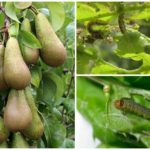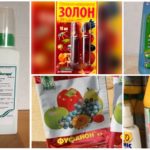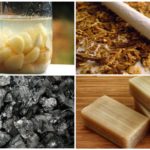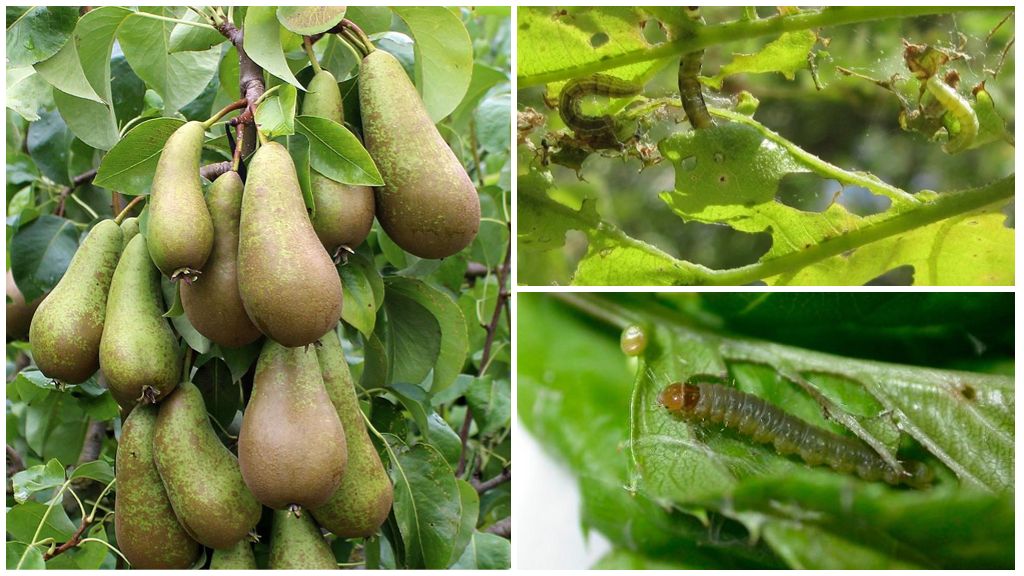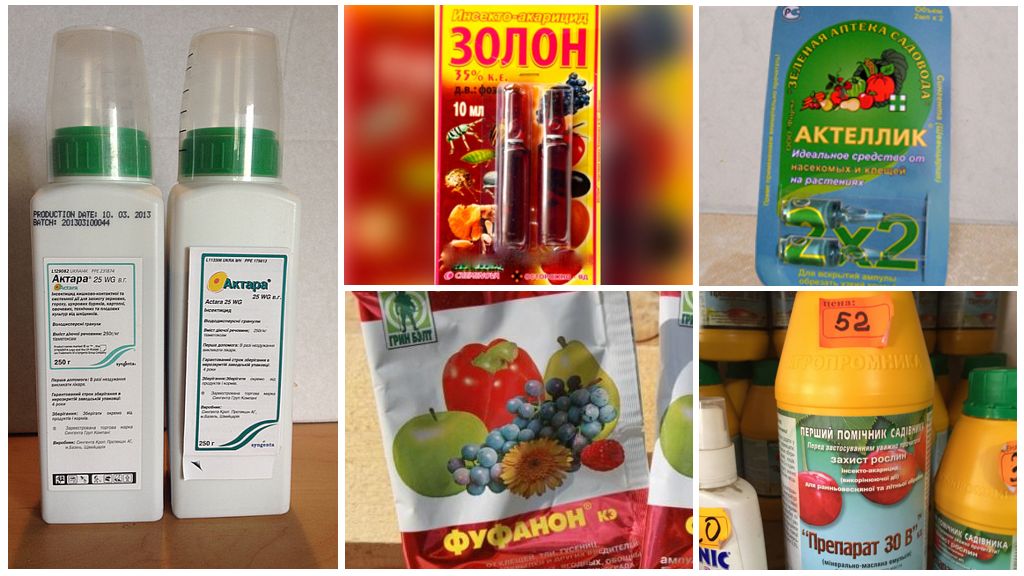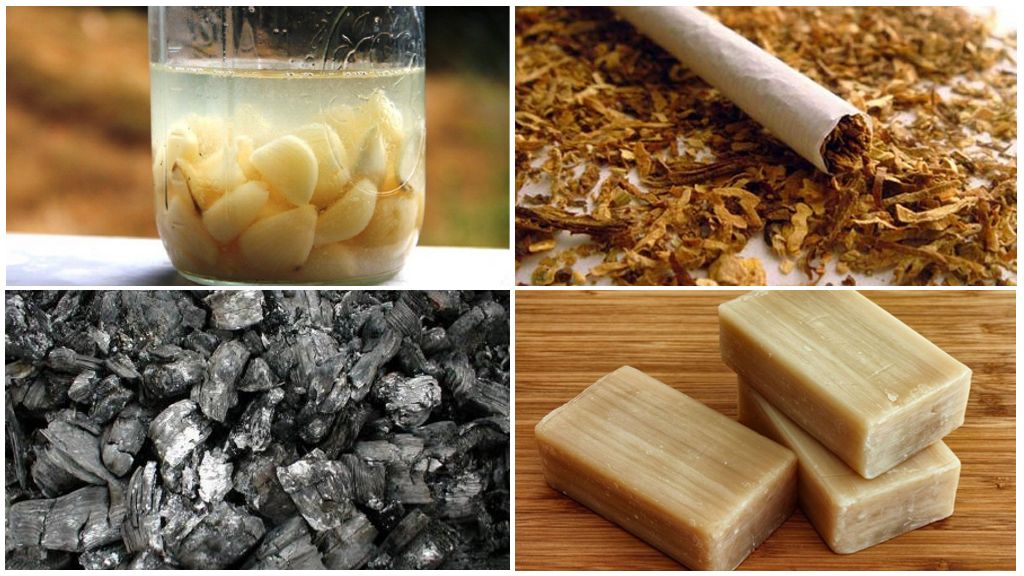How to deal with leaflets on a pear
- Pearsheet
- Anti-leafworm Chemicals
- Folk remedies to combat the leaflet
Fruit trees require special care. Timely help tree - the duty of every gardener. A sheet worm on a pear is started up very often, as evidenced by the presence of a white worm with a brown head inside a mature fetus. During the formation of a pear, the presence of a pest can be determined by twisted leaves wrapped in cobweb.
Pest appearance
A sheet worm on a pear appears in early spring, even before the leaves bloom. The female lays eggs under the bark of a tree or hides in a leafy, grassy litter near a pear. Already in early April first generation of larvae sneaks on the crown to the unblown buds.
Caterpillars are initially too small, imperceptible. The body length is only 1-2 mm. Over time, molt several times, increasing in size. The caterpillar of the last age reaches 2 cm in length. It can be distinguished from other pests by a yellowish, greenish color, a brown, almost red head.
Pearsheet spends all his life. Caterpillars they roll the sheet, wrap it in cobwebs, form a house, which serves as a refuge from enemies. At the end of the development process, the larva forms a cocoon of threads of its own production, pupates. A few days later, a butterfly appears - an adult.
The moth has a nondescript color in brown tones. On the front wings are patterns, spots of brown, brown, gray, black. The wingspan of the female is 25 mm, the males are somewhat smaller. Wings fold horizontally. The photo of the leafworm on the pear can be seen below.
Important!
Adults are engaged in the process of reproduction of offspring, do not eat anything, do not harm the pear. Larvae of all ages are extremely voracious.. Caterpillars sharpen leaves constantly, which cannot but affect the general condition of the tree. For young plants, the attack of the caterpillar tracks ends in death in the absence of adequate measures on the part of man.
Action algorithm
Modern insecticidal products surprise with its diversity, quick effect. If a moth on a pear has started, you need to take all necessary measures to prevent infection of the fruit tree next year. Actions will be similar to the struggle with the leafworm on the apple tree..
- In late autumn, you need to burn all the leaves, because pest eggs overwinter most often under their layer. Active actions are started in early spring - at the end of March and beginning of April, depending on weather conditions.
- Barrels of pear need to be lime. However, care must be taken that the solution is not too concentrated. White trunks look beautiful, but not useful for a tree.
- Special belts or skirts are tied around the tree.They are made of sticky tape, resin, buy sticky insect traps. Such a barrier will not allow the larvae to climb up to the leaves.
- In March and early April, a broad-spectrum insecticidal preparation is used. Time is chosen before flowering. Processing pears during the development of flowers is dangerous for insects that pollinate the fruit tree. In connection with defective pollination decreases yield. The effect of poison lasts about 30 days, which serves as a method of control and prevention.
- In the period of flowering or when the fruits are already formed, the struggle with the leafworm on a pear is carried out by folk remedies that are safe for humans, beneficial insects, birds.
On a note!
On small, young trees and berry bushes: currant or raspberry, - caterpillars are removed by hands or knocked down with a stream of water. A prerequisite for the prevention of infection of the pear is digging up the soil around the trunk in autumn, spring.
Effective drugs
Than to process a pear from a leaf-maker, the question arises at gardeners quite often. Any broad-spectrum insecticide is used.The solution is prepared according to the instructions. The usual dose for fruit trees in the garden is 1 ml of concentrated product per 1 liter of cold water.
Effective drugs:
- Landing force;
- Fufanon;
- Aktara;
- Actellic;
- Ashes;
- Atom;
- Binomial;
- Drug-30.
It is possible to get rid of a leaf-maker on a pear several days after careful processing. The finished product is poured into a household spray bottle, a bottle with a spray, sprayed trunks, leaves, paying particular attention to the bottom.
Initially, the drug acts by contact, enters the body of the caterpillars through chitinous cover. The poison disrupts the nervous system, causes paralysis, death. Kills pests in a few minutes. Within 2 hours, it is finally absorbed by the leaf tissues, concentrated in the root system, enters the fruit. Poisons the larvae through the food.
Mass mortality of the caterpillars occurs within 10 days. The remedy for moths on a pear does not lose its effectiveness in the rainy season, during drought. Chemical insecticides are convenient to use on "inedible" rose bushesif you do not plan to jam from rose petals.
Important!
During work with the drug, you must use personal protective equipment.When a poison enters the respiratory, food pathways, poisoning of varying severity develops; on the skin, the drug provokes an allergic reaction in the form of redness, itching.
In a separate group of professional insect repellents include biological products. Their action begins immediately, but the effect is noticeable after 7-10 days. Properties remain no more than 2 weeks. It is allowed to apply even in the presence of ripe fruits. Biological products do not contain insecticides, safe for the environment. Effective means - Fitoverm, Lepidotsid, Bitoksibatsillin. Bioinsecticides are convenient to use on tender berry crops: raspberry, currant, strawberries.
Folk remedies
The struggle with the leafwrap on pears by the methods of “traditional medicine” is carried out with the help of herbs, vegetables, substances with a strong persistent odor, essential oils, tobacco dust. In most cases, a concentrated solution is prepared for spraying the leaves or coated with the bark of the tree.
- Dissolve wood ash in cool water, add laundry soap. Such a solution is treated pear at any stage of the growing season, but not more than 1 time in 10 days.Ash irritates the skin of caterpillars, causes discomfort, creates unfavorable conditions for existence. In the autumn after harvesting and in early spring, it is recommended to dig up the soil around the trunk of the pear, pour it with a hot solution of wood ash. The active ingredients penetrate the sap of the tree, make it bitter, which repels pests. The folk remedy does not affect the taste of the fruit.
- Tobacco is crushed, poured with cold water, leave to infuse for three days. Or poured boiling water, insist day, at the end add soap. It helps to keep the active ingredients on the leaves of the tree longer. To scare away the caterpillars, butterflies, tobacco is planted in the garden in close proximity with a pear.
- A decoction of garlic is sprayed with crown, rubbed bark with teeth. The arrows of this fragrant vegetable are used to form a belt — they are tied around the trunk.
- Mustard in combination with cinnamon, red, black pepper works wonders. It repels butterflies with persistent aroma, caterpillars are irritated by tingling in contact with chitinous cover.
- Tar soap diluted in water, add salt, baking soda.The tool covers the leaves with a film, makes feeding difficult for the larvae, helps to restore the leaf plate, prevents diseases after a massive attack of pests.
Each gardener decides how to deal with a leafworm on a pear. You should always remember about your own safety and environment, do not violate the instructions, observe the necessary preventive measures, plant in the pear garden plants with a sharp aroma - calendula, marigolds, peppermint.

